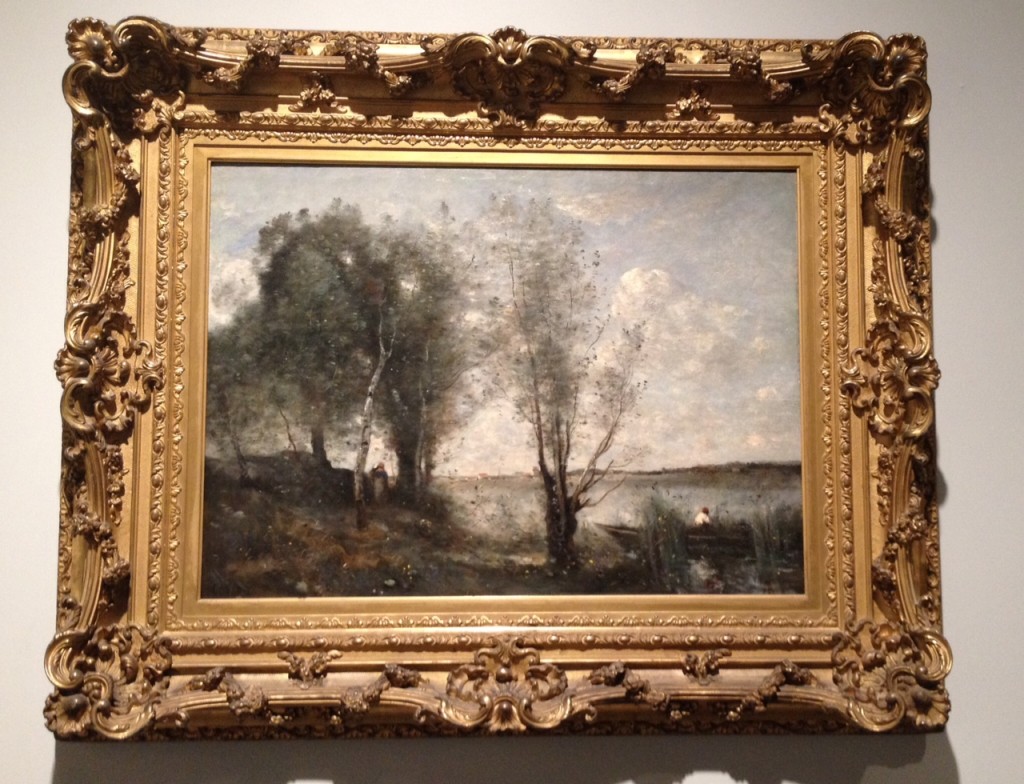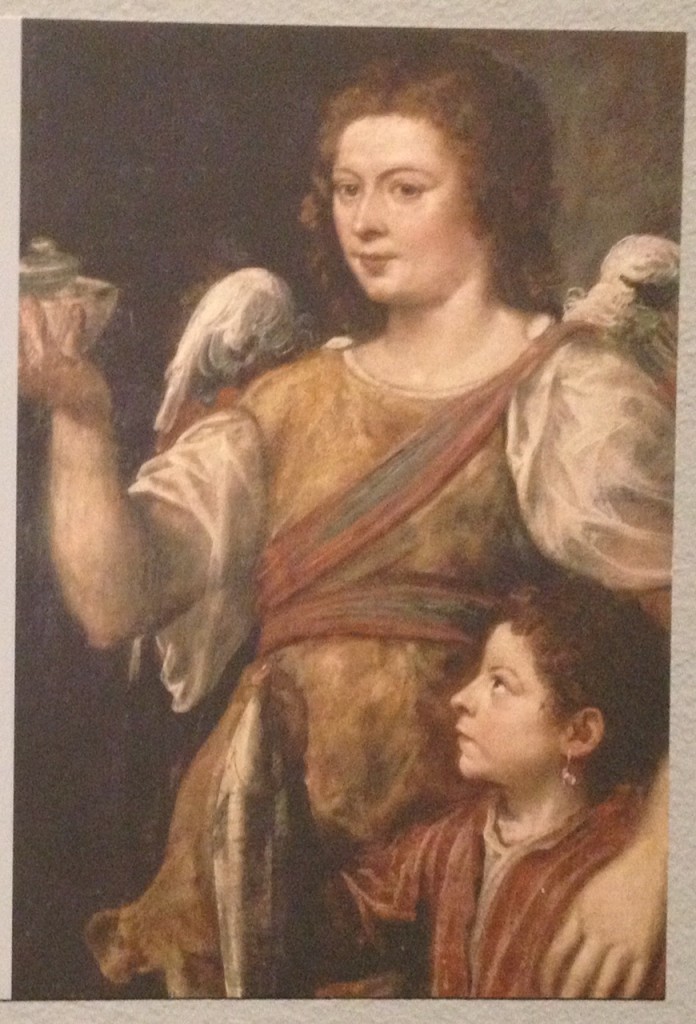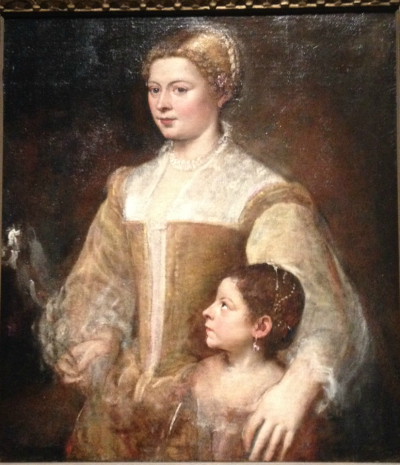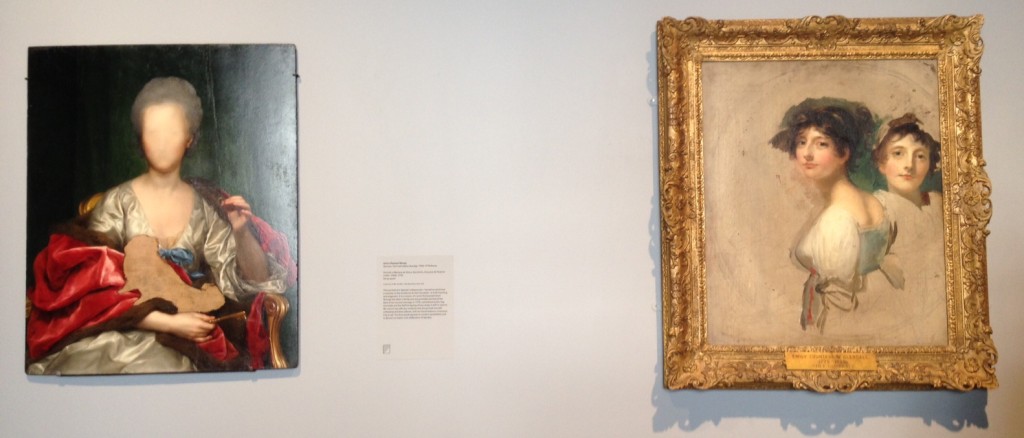In my experience, whenever a critic writes a review, some observations have to be left out. There’s no room; they don’t fit thematically without great, leaping transitions, or some other reason intrudes. Maybe they are fleeting thoughts, worth sharing in conversation but not meant for a written review. Those tidbits are what I plan to focus on here, in my first reaction to the Unfinished exhibition organized by the Metropolitan Museum of Art* (a name I use on purpose on first reference, lest we forget what “The Met” actually represents) for its first foray at the Met Breuer.
Later this week, the public will be allowed in–so it’s time to post what I think.
I’ve now seen Unfinished twice, and  I concur, for the most part, with many of the early reviews. Unfinished: Thoughts Left Visible is unquestionably more interesting on the third floor of the building, where works from the 15th through the early 20th centuries are installed. (At least that is what the wall label says. See below for the actuality.) The fourth floor, where modern and contemporary works are on display, starts out strong with wonderful paintings by Picasso and Cezanne, among others, but degenerates largely because most of the works there are not unfinished, as the Met’s own signage indicates.
I concur, for the most part, with many of the early reviews. Unfinished: Thoughts Left Visible is unquestionably more interesting on the third floor of the building, where works from the 15th through the early 20th centuries are installed. (At least that is what the wall label says. See below for the actuality.) The fourth floor, where modern and contemporary works are on display, starts out strong with wonderful paintings by Picasso and Cezanne, among others, but degenerates largely because most of the works there are not unfinished, as the Met’s own signage indicates.
Here’s what I think, in random order:
- The Unfinished theme–which I initially thought was a good one–turns out to be lacking, for two reasons. If the Met, with its intellectual and monetary resources, could not pull it off, then it probably could not be done. Second, while many works on display are feasts for the eye, the Unfinished theme invites viewers to look at them for the wrong reason, thus making the exhibit into a bit of a game.
- Still, Unfinished is definitely worth a visit: the loans are spectacular. They include van Eyck’s Saint Barbara (above left) and Leonardo’s drawing Head and Shoulders of a Woman, both masterpieces, as well as many other masterpieces.
- If, as I’ve read (but not checked against a checklist), some two-thirds of the exhibition is borrowed–an impressive proportion–that means about a third of the works here reside at the Met. I would guess that many, of not most, are rarely if ever on view. Yet many are fascinating. Go see them before they are returned to storage.
 For example, the Met owns many works by Manet (I can’t tell you how many, because the museum’s new website’s collection search function is not working properly; it’s giving me Tissots, Degas and others among the Manets) and I therefore wonder if The Funeral, an unfinished painting from c. 1867, thought to depict Baudelaire’s funeral, is usually on view. (If it is, it’s overshadowed by his finished works.) At the Met Breuer, the label says that it was still in Manet’s studio at the time of his death 15 years after the event. It was donated by Catherine Lorillard Wolfe, much of whose collection has been deaccessioned over the years, if my memory serves.
For example, the Met owns many works by Manet (I can’t tell you how many, because the museum’s new website’s collection search function is not working properly; it’s giving me Tissots, Degas and others among the Manets) and I therefore wonder if The Funeral, an unfinished painting from c. 1867, thought to depict Baudelaire’s funeral, is usually on view. (If it is, it’s overshadowed by his finished works.) At the Met Breuer, the label says that it was still in Manet’s studio at the time of his death 15 years after the event. It was donated by Catherine Lorillard Wolfe, much of whose collection has been deaccessioned over the years, if my memory serves.- Some works on view have very interesting stories behind them. A beautiful Corot (above right), for example–Boatman Among the Reeds–is a finished painting, with Corot’s trademark “tiny flecks of colored paint [that] appear to float above the fictive space of the picture,” says the label. But, it continues, critics warned viewers not to get “too close” to Corot’s paintings–“nothing is finished, nothing is carried through…Keep your distance.”
- An even better example is Titian’s Portrait of a Lady and Her Daughter. Titian left it (at left below) unfinished in his studio, and after his death “the painting was altered by someone in the studio to depict Tobias and the archangel Raphael (at right below)…only in the second half of the 20th century was the underlying tender but incomplete image of the mother and child revealed.”

- The Met’s mix of chronological and thematic display here is confusing…and not worthy of the Met. The introductory label, for example, says clearly that the 3rd floor is not contemporary art. But there in a corner section are works by not only Lucien Freud but also Elizabeth Peyton. Why? It’s a section about portraiture.
- The room devoted to Turner holds some terrific works called of “complex and ambiguous status” in the wall label. No one knows what Turner planned next for them. But these few works made me really sad that I did not see the Tate’s late Turner exhibition in 2014-15.
- Criticisms aside, some paintings here clearly show how an artist worked, what they painted first, how they sketched or did preparatory sketches, etc. See below. That’s a worthy goal.
- I know some people at the Met have been dismayed by the negative criticism, and some have told me “you have to read the catalogue.” Sorry, that doesn’t hold water. Back in 2011, Gary Tinterow–then still at the Met, now director of the Museum of Fine Arts in Houston–commented on a different blog post here: “At a large museum like the Metropolitan, fewer than 5% of the visitors to an exhibition will buy the catalogue; typically only 2-3% at a popular exhibition (more than 250,000) will leave with the catalogue in hand.” I am guessing that is still the case. Curators cannot program to the 2 to 5%; they must get their message across to most of the public.
- My biggest takeaway is disheartening: the Met had much time to work on this show and it still slipped short of the mark people expect from the Met. How will it be able to program the Breuer space given the shorter time frame it will have going forward? Already, some shows planned for Fifth Avenue–I’ve been told but have not verified–are being moved to the Met Breuer. The Met’s modern and contemporary department has already grown in size, while other departments have not. I’d like the Met to succeed on Madison Avenue, but right now I’m a bit skeptical.


